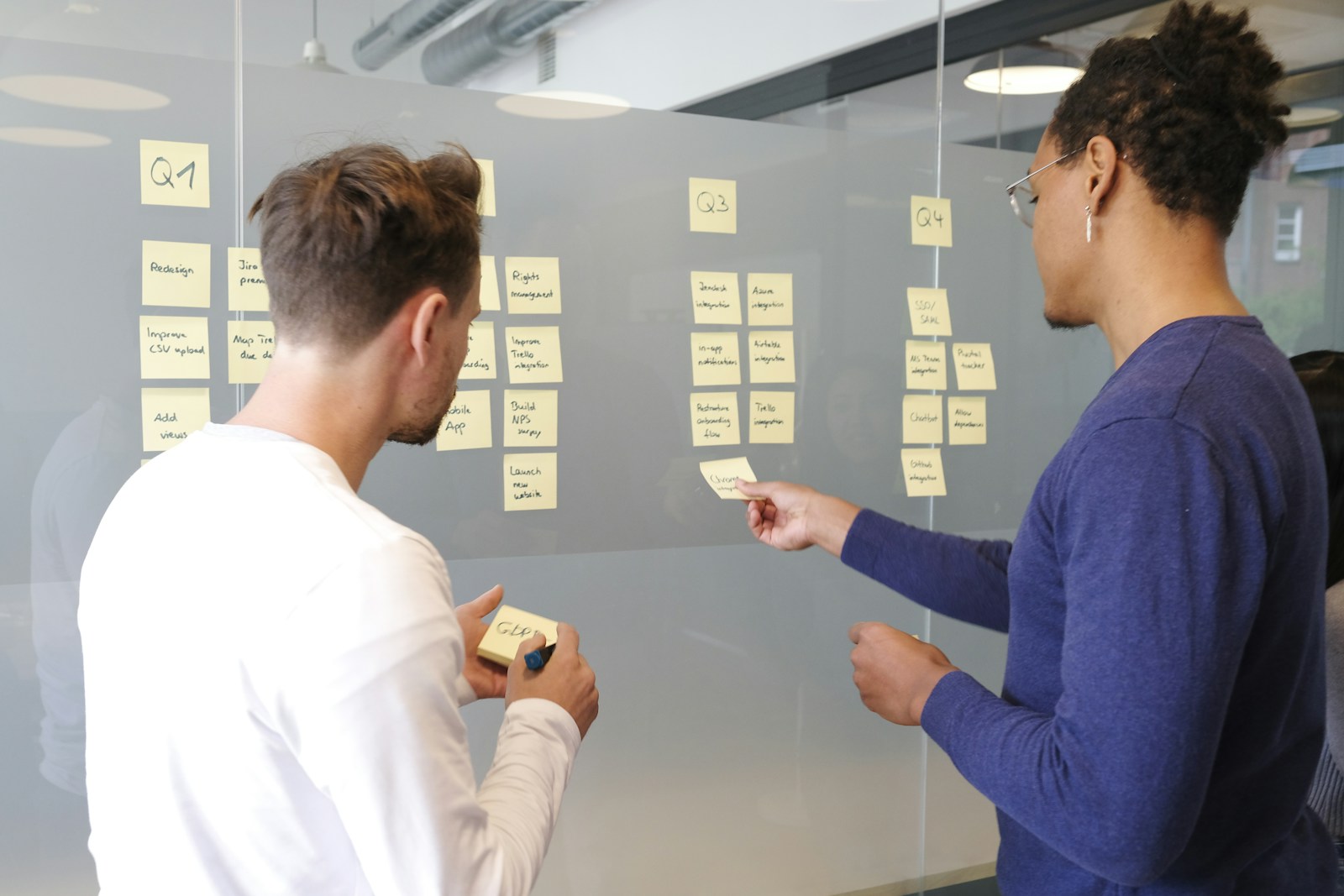In the dynamic world of business, leaders are often faced with complex challenges that require more than just traditional decision-making skills. Effective leadership is about understanding the context of the problem, the stakeholders involved, and selecting the right approach to address the issue. This is where the three problem-solving approaches—mutual problem solving, tell and listen, and tell and sell—become invaluable tools in a leader’s toolkit.
Each of these approaches offers a unique way to engage with line managers and teams, ensuring that problems are not only solved but that the solutions are embraced and effectively implemented. In this comprehensive guide, we will explore each of these problem-solving methods, their application, and the best practices for utilising them in various business contexts.
1. Mutual Problem Solving: Building Collaboration and Trust
What is Mutual Problem Solving?
Mutual problem solving is a collaborative approach where the leader and the team work together to identify and solve problems. It involves setting the context, presenting the issue, and actively engaging the team in brainstorming and developing solutions. This method is particularly effective in fostering a sense of ownership and commitment among team members.
Why Use Mutual Problem Solving?
Mutual problem solving is ideal when the problem is complex and requires diverse perspectives to generate innovative solutions. It’s also effective in situations where buy-in from team members is critical for successful implementation. By involving team members in the decision-making process, leaders can leverage the collective knowledge and creativity of the group, leading to more comprehensive and effective solutions.
When to Use Mutual Problem Solving
1. Complex Challenges: When the problem has multiple dimensions and impacts various areas of the organisation, mutual problem solving helps ensure that all perspectives are considered.
2. Building Team Engagement: This approach is beneficial when you want to strengthen team dynamics and foster a collaborative culture.
3. Implementing Change: When change initiatives require the support and cooperation of the entire team, mutual problem solving can help mitigate resistance and build commitment.
Steps for Effective Mutual Problem Solving
1. Set the Stage: Begin by clearly defining the problem and its impact on the team or organisation. Make sure everyone understands the context and the importance of finding a solution.
2. Encourage Open Dialogue: Create an environment where team members feel comfortable sharing their thoughts and ideas. Use open-ended questions to facilitate discussion and encourage diverse viewpoints.
3. Co-Create Solutions: Guide the team in brainstorming potential solutions. Use techniques like mind mapping or SWOT analysis to explore different options and evaluate their feasibility.
4. Agree on Action Steps: Once a solution is identified, ensure that there is consensus on the next steps. Assign roles and responsibilities to team members and establish a timeline for implementation.
5. Monitor and Adjust: Keep track of progress and be prepared to make adjustments as needed. Regular check-ins can help address any issues that arise and ensure that the solution is on track.
Case Study: Mutual Problem Solving in Action
Scenario: A manufacturing company is experiencing a high rate of defects in its production line, impacting both costs and customer satisfaction. The production manager decides to use mutual problem solving to address the issue.
1. Setting the Stage: The manager calls a meeting with representatives from quality control, production, and engineering. He outlines the defect rates, the financial impact, and customer complaints.
2. Encouraging Dialogue: Team members discuss potential causes, from machinery issues to training gaps. The manager facilitates the conversation, ensuring that all voices are heard.
3. Co-Creating Solutions: The team identifies several potential solutions, including additional training for operators, adjustments to machinery settings, and a new quality control process.
4. Agreeing on Action Steps: The team agrees on a plan that includes recalibrating machinery and implementing a training program. Responsibilities are assigned, and a timeline is set.
5. Monitoring and Adjusting: The manager schedules weekly check-ins to review progress. When initial results show improvement, the team decides to expand the training program.
Outcome: The defect rate drops significantly, and the team feels a sense of pride and ownership in the solution. The collaborative approach strengthens the relationship between departments and boosts morale.
2. Tell and Listen: Balancing Leadership and Openness
What is Tell and Listen?
The tell and listen approach is a semi-directive style where the leader presents a solution to a problem but remains open to feedback and input. It is a balance between guiding the team and incorporating their insights. This approach is effective when a leader has a clear idea of the direction but wants to refine the solution with input from those affected.
Why Use Tell and Listen?
Tell and listen is particularly useful when there is a time constraint or when the leader has already developed a preliminary solution but recognises the value of feedback from the team. It allows for quick decision-making while still engaging team members in the process. This approach helps to refine solutions and ensures that potential challenges are addressed before implementation.
When to Use Tell and Listen
1. Time-Sensitive Decisions: When a decision needs to be made quickly but the leader wants to ensure that the solution is practical and well-received.
2. Refining Solutions: If a solution has been developed but could benefit from additional insights or perspectives.
3. Introducing New Policies: When rolling out new policies or procedures, this approach can help identify potential issues and improve acceptance.
Steps for Effective Tell and Listen
1. Define the Problem and Solution: Clearly articulate the problem and your proposed solution. Provide context and explain the reasoning behind your approach.
2. Present the Solution Confidently: Share your solution with the team, ensuring that they understand the proposed changes and the expected outcomes.
3. Invite Feedback: Ask for feedback on specific aspects of the solution. Be open to suggestions and ready to make adjustments if needed.
4. Act on Feedback: Evaluate the feedback and decide which suggestions to incorporate. Communicate any changes to the team and explain your decision-making process.
5. Implement and Review: Implement the final solution and monitor its effectiveness. Schedule a follow-up meeting to review the results and gather additional feedback.
Case Study: Tell and Listen in Action
Scenario: A retail company is planning to change its customer service procedures to improve response times. The Customer Service Director has developed a new procedure and uses the tell and listen approach to introduce it.
1. Defining the Problem and Solution: The director explains that the current response times are too slow, leading to customer dissatisfaction. She presents a new procedure that includes streamlined processes and additional training for staff.
2. Presenting the Solution: The director shares the details of the new procedure in a team meeting, using data to demonstrate how the changes will reduce response times.
3. Inviting Feedback: She asks for feedback on the proposed changes, specifically seeking input on the feasibility of the new process and any potential barriers to implementation.
4. Acting on Feedback: Team members highlight concerns about the training schedule. The director revises the plan to include shorter, more frequent training sessions, which are easier to accommodate.
5. Implementing and Reviewing: The new procedure is implemented, and a follow-up meeting is scheduled to review its effectiveness. The director monitors customer feedback and response times, making further adjustments as needed.
Outcome: The revised procedure leads to a 20% reduction in response times and a noticeable increase in customer satisfaction. The team feels more engaged in the process, and the director’s willingness to listen and adapt strengthens trust within the department.
3. Tell and Sell: Driving Change with Confidence
What is Tell and Sell?
Tell and sell is a more directive approach where the leader presents a solution and then actively persuades the team to accept and implement it. This method is necessary in situations where swift action is required, or when the solution involves significant changes that may be met with resistance.
Why Use Tell and Sell?
This approach is essential when there is little room for debate or when a clear and firm directive is needed. It is often used in crisis situations or when implementing major strategic shifts. The key to success with tell and sell is effective communication and persuasive skills, as the leader must build a compelling case for the proposed solution.
When to Use Tell and Sell
1. Crisis Management: When immediate action is required to address a critical issue, and there is no time for extended discussion.
2. Major Strategic Changes: When implementing significant changes, such as restructuring or new business models, that require strong leadership and clear direction.
3. Overcoming Resistance: When resistance to change is expected, and the leader needs to proactively address concerns and build support for the solution.
Steps for Effective Tell and Sell
1. Define the Context and Solution: Clearly define the problem and present a well-thought-out solution. Use data and evidence to support your position.
2. Present the Solution with Conviction: Communicate the solution confidently and explain why it is the best course of action. Address the potential benefits and anticipated challenges.
3. Anticipate and Address Objections: Prepare for common objections and have responses ready. Use persuasive techniques to address concerns and reinforce the benefits of the solution.
4. Create a Sense of Urgency: Emphasise the importance of immediate action and the risks of inaction. Use a compelling narrative to convey the urgency of the situation.
5. Monitor and Support: After implementation, closely monitor progress and provide support as needed. Be prepared to address any issues that arise and reinforce the benefits of the solution.
Case Study: Tell and Sell in Action
Scenario: A software company needs to shift from a traditional on-premises licensing model to a cloud-based subscription model. This change is critical for staying competitive in the market, but it faces strong resistance from both employees and long-standing customers who are accustomed to the current system.
1. Define the Context and Solution: The CEO explains the need for the shift, citing industry trends and the increasing demand for cloud-based solutions. He presents the new subscription model, highlighting its benefits such as continuous updates, lower upfront costs for customers, and more predictable revenue for the company.
2. Present the Solution with Conviction: In a company-wide meeting, the CEO lays out the details of the new model and the strategic reasons behind the decision. He emphasises that this change is essential for the company’s future growth and sustainability. He uses case studies from competitors who successfully transitioned to a subscription model, showing the positive impact on their business.
3. Anticipate and Address Objections: The CEO anticipates objections, particularly from the sales and support teams who fear that the change will disrupt their relationships with customers. He addresses these concerns head-on, explaining how the company will support both employees and customers through the transition. For sales teams, he introduces new incentive structures that align with the subscription model. For customers, he outlines a robust support plan to help them transition smoothly.
4. Create a Sense of Urgency: The CEO stresses the urgency of the change, highlighting that failing to adapt could lead to a loss of market share and potentially endanger the company’s future. He uses data to show the rapid growth of cloud adoption and the declining demand for on-premises solutions. This sense of urgency helps to shift the mindset from resistance to action.
5. Monitor and Support: Following the rollout, the CEO closely monitors the transition’s progress. He sets up a dedicated task force to address any issues that arise and provides regular updates to the company on milestones achieved. When initial customer feedback indicates confusion about the new model, the company quickly implements additional training and support resources.
Outcome: The transition to the subscription model is challenging but ultimately successful. While there is initial pushback, the clear communication and strong leadership help to bring employees and customers on board. Within a year, the company sees a 30% increase in recurring revenue and a significant reduction in customer churn. The tell and sell approach, combined with ongoing support and communication, proves crucial in navigating this major strategic shift.
Integrating All Three Problem-Solving Approaches for Effective Leadership
Choosing the Right Approach for the Right Situation
While each of the three problem-solving approaches—mutual problem solving, tell and listen, and tell and sell—can be powerful on its own, the true strength of these methods lies in knowing when and how to apply each one. Effective leaders understand that different situations call for different strategies, and they are adept at switching between these approaches as needed.
Combining Approaches for Complex Challenges
In many cases, a single approach may not be sufficient. Complex challenges often require a combination of all three methods to achieve the best outcomes. For example, a leader might start with mutual problem solving to gather input and build a foundation of understanding. Once a preliminary solution is developed, they might switch to a tell and listen approach to refine the solution based on additional feedback. Finally, during the implementation phase, they might use the tell and sell approach to ensure strong alignment and commitment to the plan.
Example: Navigating Organisational Change
Consider a scenario where a company is undergoing a major reorganisation that affects multiple departments. Here’s how a leader might integrate all three approaches:
1. Mutual Problem Solving for Initial Planning: The leader convenes a series of workshops with representatives from each affected department to discuss the goals of the reorganisation, identify potential issues, and brainstorm possible solutions. This collaborative approach helps build a shared understanding of the challenges and opportunities, laying the groundwork for the change.
2. Tell and Listen for Refining the Plan: With a draft reorganisation plan in place, the leader holds individual meetings with department heads to present the proposed changes. They seek feedback on specific aspects, such as how the changes will impact workflow or team dynamics. This feedback is used to refine the plan and address any major concerns before the final rollout.
3. Tell and Sell for Implementation: Once the final plan is ready, the leader presents it to the entire organisation with a clear, compelling message about why the changes are necessary and how they will benefit the company. They actively address any objections and use persuasive techniques to build support for the new structure. Throughout the implementation, they provide regular updates and celebrate small wins to maintain momentum and morale.
Practical Tips for Using the Three Approaches Effectively
1. Assess the Situation: Before choosing an approach, take the time to understand the context of the problem. Consider factors such as the complexity of the issue, the stakeholders involved, and the urgency of the decision.
2. Start with Openness: Whenever possible, begin with mutual problem solving to gather diverse perspectives and build a strong foundation. Even if you ultimately need to make a unilateral decision, this initial engagement can help mitigate resistance.
3. Be Flexible: Be prepared to switch between approaches as the situation evolves. For example, if mutual problem solving reveals a clear and urgent path forward, you may need to shift to tell and sell to drive rapid implementation.
4. Communicate Clearly: Regardless of the approach, clear communication is essential. Ensure that your team understands not just what is being decided but why. Use data, stories, and examples to make your case compelling.
5. Build Trust: Trust is the foundation of effective leadership. Whether you are collaborating, listening, or persuading, act with integrity and transparency. Acknowledge mistakes and be willing to adapt your approach based on feedback.
Conclusion
Effective leadership in today’s complex business environment requires more than just making decisions—it requires the ability to navigate a diverse range of challenges and engage with your team in meaningful ways. By mastering the three problem-solving approaches—mutual problem solving, tell and listen, and tell and sell—you can become a more versatile and effective leader, capable of driving success in any situation.
Remember, the key to using these approaches is not just in knowing what they are, but in understanding when and how to apply them. With practice and reflection, you can develop the flexibility and insight needed to choose the right approach at the right time, leading your team to greater collaboration, innovation, and achievement.












0 Comments